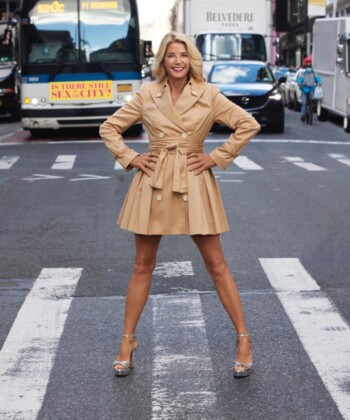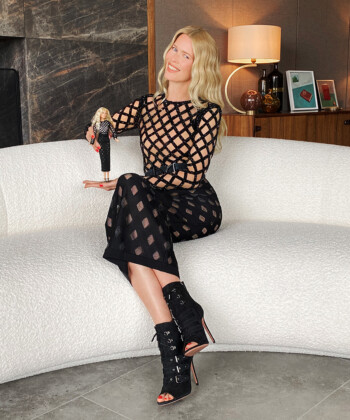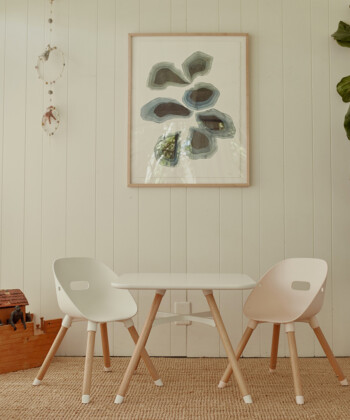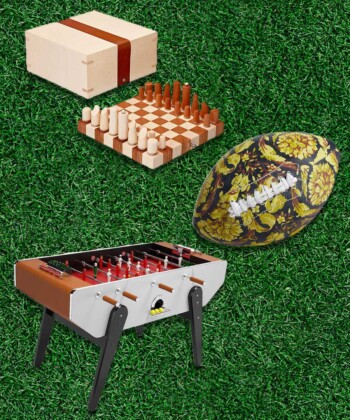Professional organizer Justin Klosky can officially confirm: “spring cleaning” isn’t just a figure of speech. Klosky is the founder of O.C.D. Experience, a company that lends an organizational hand to high-end clients, celebrities and brands like Saks Fifth Avenue. “People get a little more worked up during this time of year, and business picks up because people have an immediate urgency to find order in their lives before summer time comes,” he explains. Herewith, a fool-proof guide to mastering the art of a spring closet cleanse.

Courtesy of LA Closet Design
1. START EARLY
“Turn all of your hangers the opposite way at the beginning of the season, and then as you wear each piece, put the hanger back the correct way,” says Anna Palmer, co-founder and CEO of Fashion Project, an online clothing donation service. “After a few weeks, think about donating any piece of clothing where the hanger is still backwards and has never been worn. It’s a really visual way to see the pieces you’re using and which ones you may want to part with to make room in your closet for new items.”
2. EDIT, EDIT, EDIT
Melanie Charlton, the CEO of Clos-Ette, a closet customization company, suggests editing your wardrobe with a professional or friend. “Choose someone whose style you admire and who won’t placate you,” says Charlton, who has designed closets for celebrities like Jay Z and Kate Hudson. “You need to cut down excess—and that means things that don’t fit you or your look.” Once you’ve edited, Charlton promises that organizing will become infinitely easier.
3. ABANDON NOSTALGIA
“Your closet will stay organized if you practice the art of letting go of an item when you bring a new one in of a similar kind,” says Klosky.
4. DONATE
Companies like Fashion Project that specialize in high-end brands—like Chanel and Lanvin—make donating an effortless and convenient way to raise money for the charity of your choice. Request a pre-paid donation bag to ship your items in, and once they’re received, Fashion Project merchandises the pieces on their site. After an item sells, you’ll receive a tax-deductible receipt that indicates how much money that piece raised for your selected cause. Explains Palmer, “We process everything by hand and treat each item with as much love and care as when it was in the donor’s closet.”
5. FOCUS ON LIGHTING
LA Closet Design CEO Lisa Adams recommends replacing your hanging rods with battery-operated LED closet rods to make your items easily visible.

Courtesy of LA Closet Design
6. TURN TO TOOLS
Charlton opts for lavender folding boards for sweaters, and Adams swears by Pliio clothing filers for t-shirts. She also recommends purse pillows, which keep unstructured bags standing vertical on shelves.
7. MAKE A PLAN
Klosky often finds that his clients buy too many organizational devices prior to deciding how they want their closet to truly function. “You don’t build a house, and then decide how you want to design the inside. You start with the foundation then build out. Most people have too much stuff. Make sure that the space you have can contain the amount of stuff you want to keep in it,” he advises.

Courtesy of LA Closet Design
8. MAINTAIN DRAWER ORDER
“I love belt hangers because belts can become overwhelming in drawers. The same goes for scarves—they’re a pain to keep organized in drawers,” explains Klosky. “I’m a stickler for having my nightstand organized, as I hate things moving around in drawers getting all disorganized, so I created a custom drawer organizer by buying a silverware caddy from IKEA and lining parts of it with felt for my watches.”
9. GO DIGITAL
“You can also use apps to catalog all of your prized belongings,” says Adams. “This way, items can be stored, but you can still have a reference for where they are.” She recommends using the app Items & Storage Inventory LITE.
10. COLOR COORDINATE
Once the space is completely organized, Charlton suggests arranging clothes by color. “Light to dark, left to right. It’s a visual merchandising trick that allows your eye to follow color more easily.”






































